Alcohol policies
Populations of interest in alcohol policy
Adults
- Men drink more than women, putting them at greater risk for alcohol-related cancers.
- Women who consume more than four drinks per week are at a higher risk for alcohol-related cancers.1
Frequency of alcohol consumption (aged 18+), by sex – 2017-2018
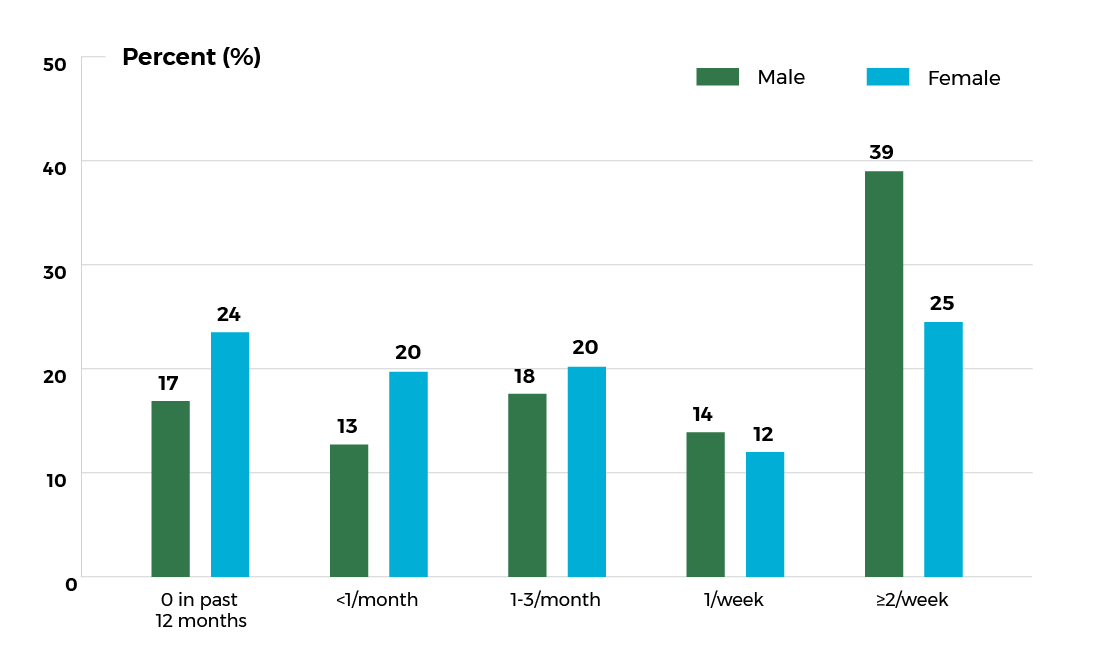
Frequency of drinking 5+drinks for men/4+drinks for women, by sex – 2017-2018
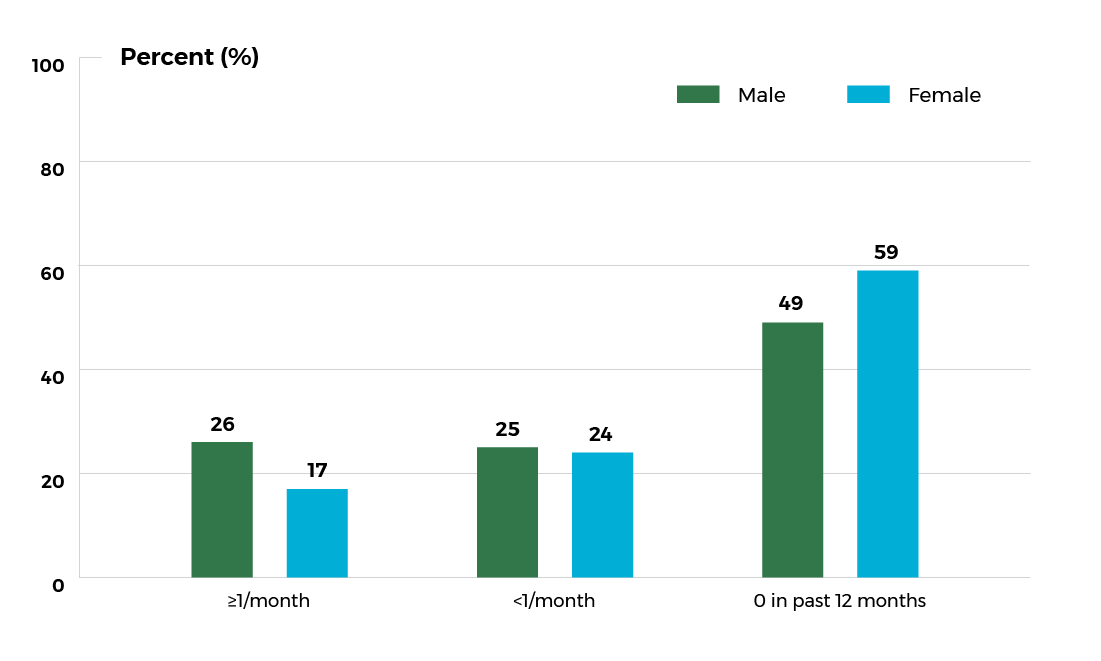
Youth
- On average, Canadian youth begin to drink at 13.5 years old.2
- Early initiation is associated with alcohol use disorders later in life.3
- Drinking increases with each grade level: Nearly 25% drink in grade 7-9 while 65% drink in grades 10-12.4
Self-reported past-year alcohol use and drinking 5+ drinks on one occasion among Grades 7-12 – 2012-2017
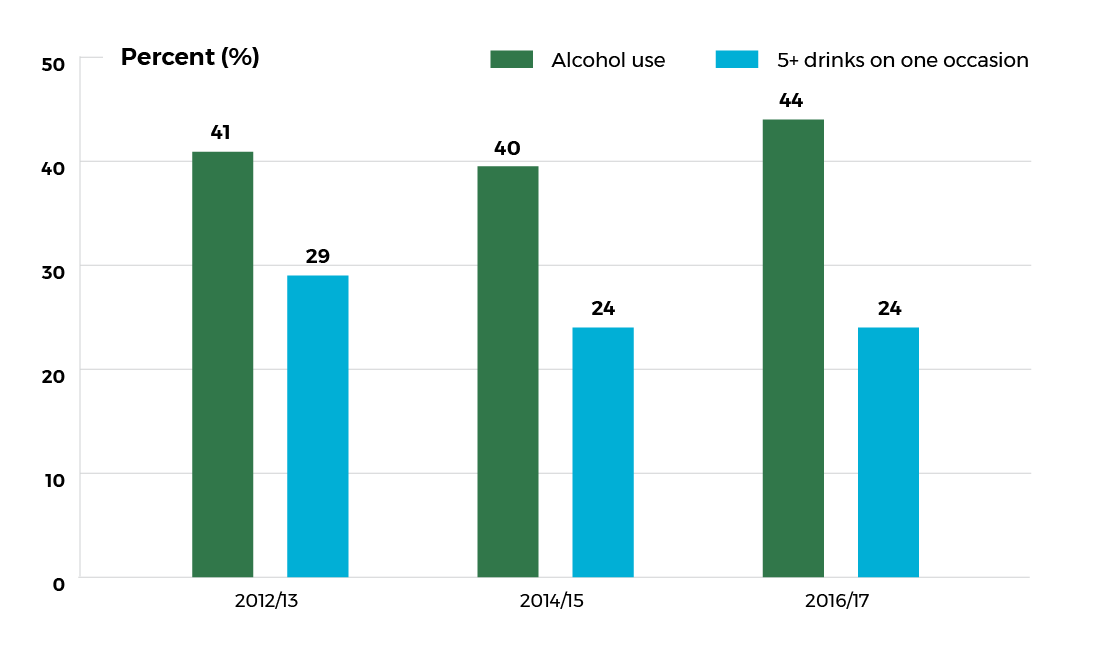
First Nations, Inuit and Métis
- Across Canada, Inuit have the highest proportion of non-drinkers at 38%, with off-reserve First Nations at 31%. Only 24% of non-Indigenous people identify as non-drinkers.5
- Indigenous youth have higher odds of past-year drinking and initiate drinking at a younger age compared to non-Indigenous youth.6
- Binge drinking rates are declining among Indigenous youth, with a 30% decline over an eight-year period ending 2015.7
Alcohol use among off-reserve First Nations, Inuit and Métis vs non-Indigenous people aged 12+ – 2012
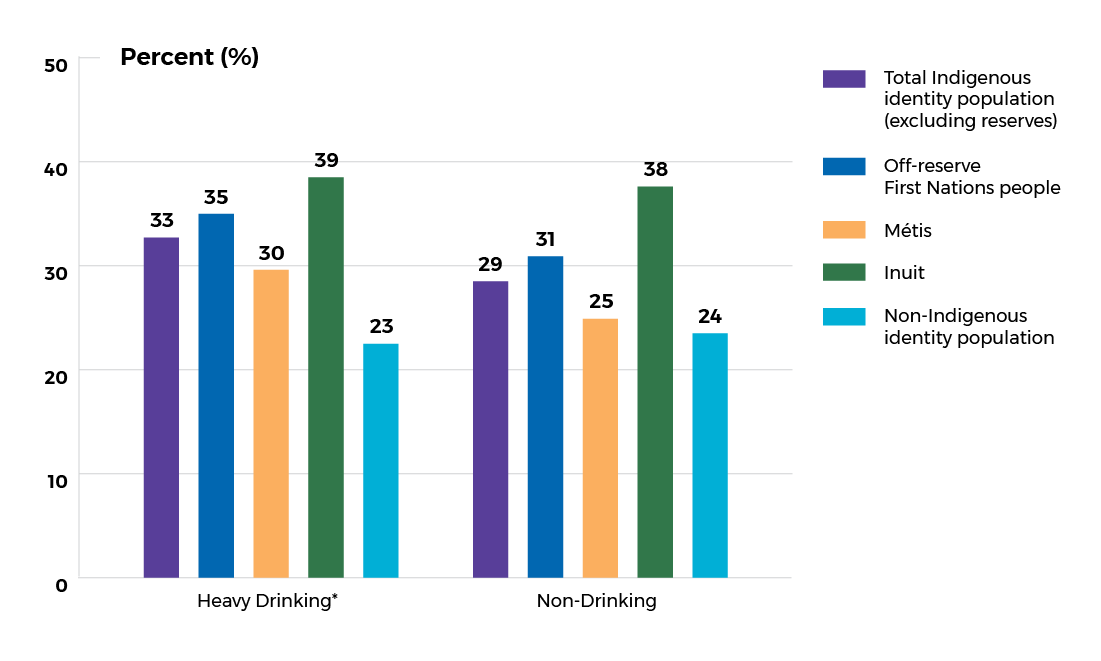
*Heavy drinking is defined as 5 or more drinks for men and 4 or more drinks for women on one occasion at least once a month.
LBGTQ2S+
- Nearly 25% of LGBTQ2S+ members report problem drinking.8
- Lesbian and bisexual women are 1.6X more likely to drink more than heterosexual women.9
- 1 in 4 LGBTQ2S+ members use alcohol or drugs to cope with emotional and/or physical abuse.10
Socio-economic status (SES)
- High SES Canadians drink more and engage in more risky drinking behaviours compared to low SES Canadians.11
- Low SES Canadians are harmed from alcohol more frequently and more severely than high SES Canadians.12
- Low SES Canadians typically have a higher concentration of alcohol outlets, resulting in greater access, greater use, and greater harms.13
Percentage of heavy drinking* by income quintile and sex – 2018
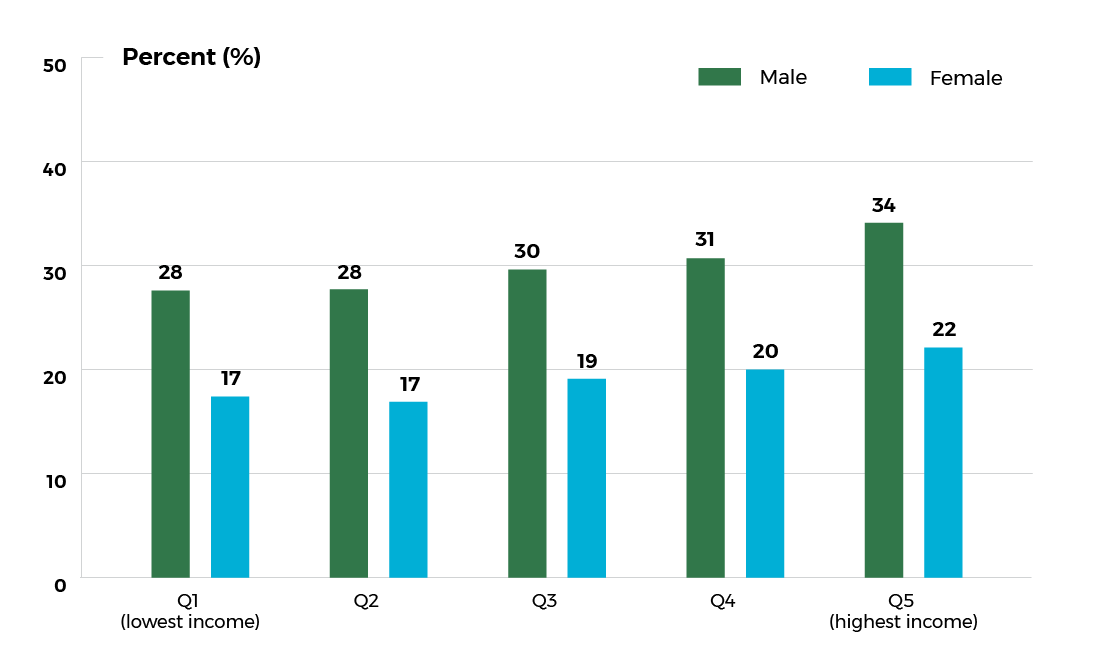
*Heavy drinking is defined as 5 or more drinks for men and 4 or more drinks for women on one occasion at least once a month.
- Hydes T, Burton R, Inskip H, Bellis M, Sheron N. A comparison of gender-linked population cancer risks between alcohol and tobacco: how many cigarettes are there in a bottle of wine?. BMC Public Health. 2019;19(1).
- Alcohol (Canadian Drug Summary). 2019. Cited 28 January 2021. Available from: https:// www.ccsa.ca/sites/default/files/2019-09/CCSACanadian-Drug-Summary-Alcohol-2019-en.pdf.
- Hingson RW, Heeren T, Winter MR. Age at drinking onset and alcohol dependence: age at onset, duration, and severity. Arch Pediatr Adolesc Med. 2006 Jul;160(7):739-46. doi: 10.1001/archpedi.160.7.739. PMID: 16818840
- Alcohol (Canadian Drug Summary). 2019. Cited 28 January 2021. Available from: https:// www.ccsa.ca/sites/default/files/2019-09/CCSACanadian-Drug-Summary-Alcohol-2019-en.pdf
- Kelly-Scott K. Aboriginal peoples: Fact Sheet for Ontario. Statistics Canada; 2016. Cited 29 January 2021. Available from: https:// www150.statcan.gc.ca/n1/en/pub/89-656- x/89-656-x2016007-eng.pdf?st=Hy6PsI3-.
- Sikorski C, Leatherdale S, Cooke M. Tobacco, alcohol and marijuana use among Indigenous youth attending off-reserve schools in Canada: cross-sectional results from the Canadian Student Tobacco, Alcohol and Drugs Survey. Health Promotion and Chronic Disease Prevention in Canada. 2019;39(6/7):207-215.
- Ibid.
- Canadian Centre for Addictions. Addiction In The LGBTQ Community. Canadian Centre for Addictions. 2021. Cited 10 February 2021. Available from: https:// canadiancentreforaddictions.org/addiction-lgbtq/
- House of Commons Canada. The Health of LGBTQIA2 Communities In Canada. 2019. Cited 10 February 2021. Available from: https:// www.ourcommons.ca/Content/Committee/421/HESA/ Reports/RP10574595/hesarp28/hesarp28-e.pdf
- Jaffray B. Experiences of violent victimization and unwanted sexual behaviours among gay, lesbian, bisexual and other sexual minority people, and the transgender population, in Canada, 2018. 2020. Cited 29 January 2021. Available from: https://www150.statcan.gc.ca/n1/pub/85-002-x/2020001/article/00009-eng.htm
- The Chief Public Health Officer’s Report on the State of Public Health in Canada 2015 Alcohol Consumption In Canada. Ottawa, ON: Public Health Agency of Canada; 2015 Cited 29 January 2021. Available from: https://www.canada.ca/content/dam/ canada/health-canada/migration/healthy-canadians/publications/department-ministere/state-publichealth-alcohol-2015-etat-sante-publique-alcool/alt/ state-phac-alcohol-2015-etat-aspc-alcool-eng.pdf
- Slaunwhite A, McEachern J, Ronis S, Peters P. Alcohol distribution reforms and school proximity to liquor sales outlets in New Brunswick. Canadian Journal of Public Health. 2017;108(5-6):e488-e496
- Slaunwhite A, McEachern J, Ronis S, Peters P. Alcohol distribution reforms and school proximity to liquor sales outlets in New Brunswick. Canadian Journal of Public Health. 2017;108(5-6):e488-e496
